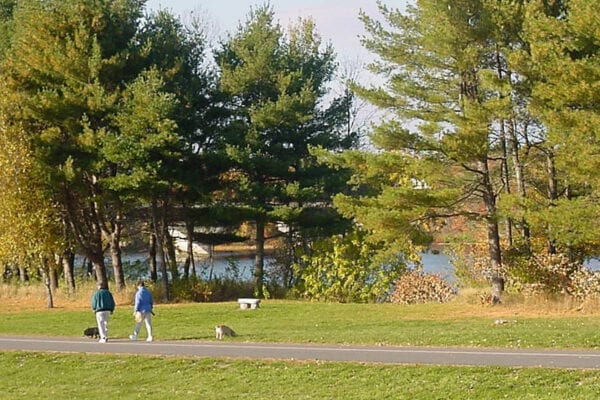President Biden recently announced the American Jobs Plan, a historic investment in our infrastructure aimed at creating new jobs and reducing pollution. Maine stands to benefit tremendously from this once-in-a-lifetime proposal to build a better future, but only if we invest strategically in projects that not only grow our economy but also make our communities stronger, safer, and cleaner through investments in public transportation, walking and biking pathways, and electric vehicle infrastructure.
Let’s face it: Maine’s transportation scene is pretty one dimensional. Unless you have your own car or truck, you’re stuck relying on a skimpy and uncoordinated network of buses, shuttles, and rides from friends…but only if you look hard enough.
A recent study by US News and World Report ranks Maine’s transportation infrastructure 37th of 50 states. Our transportation woes are made even more challenging by the fact that Maine has the highest percentage of rural residents of any state in the nation. What’s more, while the majority of rural residents rely on a personal vehicle, more than 27,000 rural homes in the state do not have access to a car. This statistic does not account for the thousands of homes that split access to one vehicle between multiple residents, nor does it include the increasingly high costs of car ownership. The implications of this unfair situation are broad, impacting the way that Mainers access healthcare, grocery stores, community hubs, schools, and other essential services.
Because we’ve spent billions on wider highways and roads without a parallel investment in these healthier options, the infrastructure isn’t there to make it easy for Mainers to choose these alternatives. In 2019, Maine received a “D” rating from the League of American Bicyclists in the “infrastructure and funding” category, reflecting the lack of bicycle lanes and trails across the state.
Further, our passenger rail system only travels on one line, making it only as far north as Brunswick, and limiting access to viable train travel for most Mainers. To cap it all off, the COVID pandemic has suffocated our already restricted public transportation network and has negatively altered public perceptions of public transit, setting community solutions back substantially.
Fortunately, we don’t have to look far for safe, sensible, and energy efficient transportation initiatives. While Maine invests a dismal amount in public transportation funding per person annually relative to other states (86 cents on average), our neighbors over in Vermont, for instance, allocate 12 dollars per person. That same US News and World Report ranks Vermont #1 in transportation infrastructure despite also having a predominantly rural population. Thoughtful and strategic investments in bus and train lines have connected communities across Vermont, lowering emissions and reducing traffic incidences.
Here in Maine, several projects across the state highlight our potential to embrace a more holistic approach to transportation:
- The Saco-Biddeford Multimodal Bridge will provide a regional recreation destination while also serving as a utilitarian bike and pedestrian connection between Saco and Biddeford.
- The Maine Trails Coalition recently unveiled a plan to create a statewide rail trail network that would provide safer and easier biking and walking routes (a recent study found that exchanging one daily car trip for a bike ride can lower your transportation carbon footprint by 67%).
- A new Southern Maine Connector will link four regional health centers in southern Maine, overcoming transportation barriers that frequently prevent patients from receiving the care they need.
- This story about an Ellsworth man’s experience with the local rail trail illuminates the potential interpersonal transformations that can occur with investment in biking and walking trails.
Opportunities for progress abound, but in order to realize the social, economic, and environmental benefits, we must prioritize investments in healthier, more affordable, and fun options for getting around as we emerge from COVID times. Several promising projects, such as the second proposed Presque-Isle bus loop, have already succumbed to the pressures of the pandemic. We cannot allow them to fade into the background as restrictions are lifted and people start getting back on the move.
Of course, electric cars and trucks must be part of the conversation, but if we’re just moving everyone to cleaner cars and trucks, we’re not solving for problems of health, congestion, and sprawl that are baked into the current car-based system. We recognize that everyone won’t be able to bike or hop on a train immediately, so we need to keep working to ensure that drivers have less environmental and health impacts by reducing emissions caused by personal vehicles. Fifty-four percent of Maine’s carbon emissions come from cars and trucks, and these emissions negatively impact the cleanliness of the air we breathe, causing health issues ranging from asthma to premature death. Infrastructure investments provide a great opportunity to modernize our vehicle fleet, reducing emissions and making electric vehicles more financially accessible to all Mainers. Parallel investments in transit, biking, and walking will help us lead healthier lives and avoid unnecessary car trips.

The Brunswick-Topsham Bike Path
At the end of the day, Mainers need better transportation choices. We have an aging population spread across a large state, and we owe it to ourselves to stay connected and healthy. We can attract younger residents and new businesses by investing in biking, walking, and transit infrastructure we know they appreciate. And we can reduce the congestion that wastes people’s time by giving people more opportunity.
We shouldn’t have to move to Vermont to access effective rural transportation solutions. Rather, we should learn from proven solutions, both here and abroad, and continue to imagine what Maine could look like with more available transportation options. More frequent and affordable public transit, and safer bike lanes and walkways are just a few of the ways we can make our state healthier and happier coming out of a major health crisis.
—by Josh Caldwell, NRCM Climate & Clean Energy Outreach Coordinator











Leave a Reply